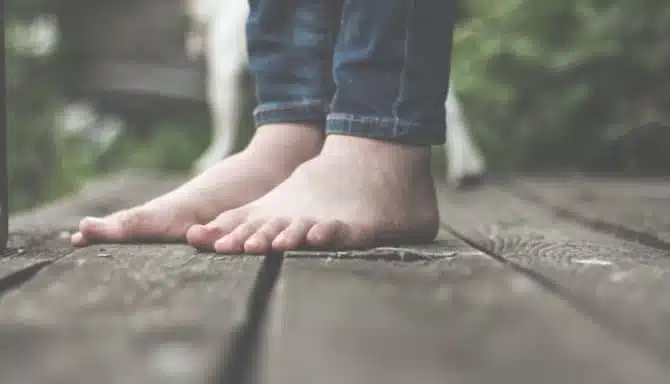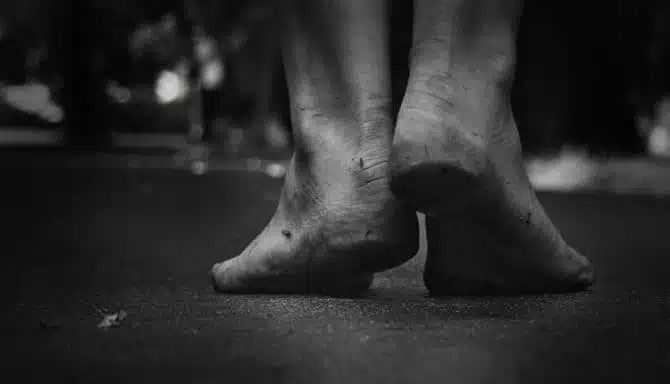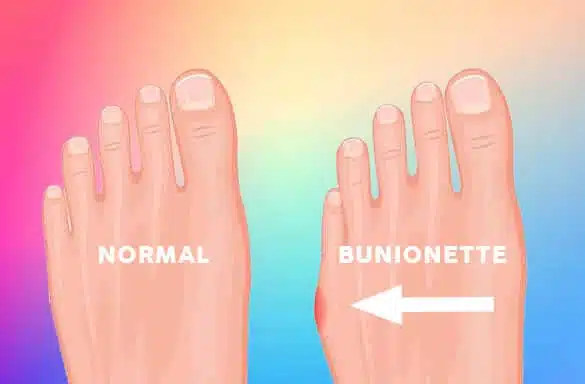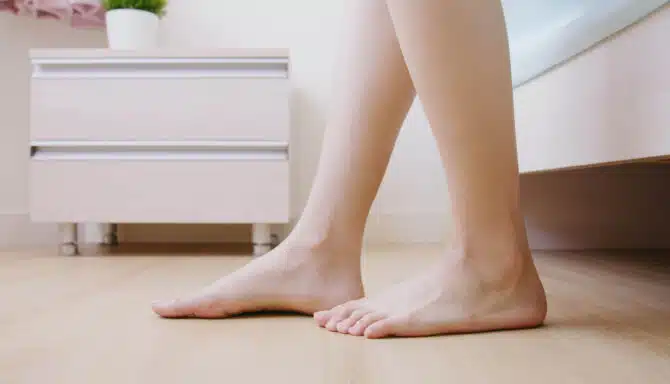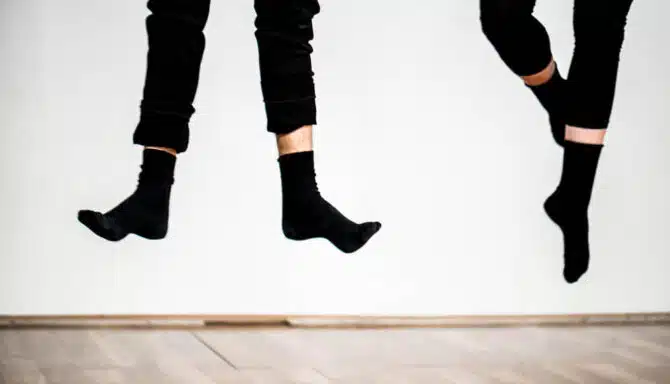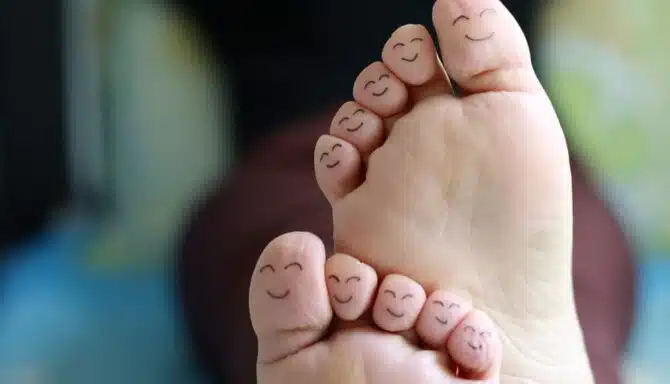About 30% of the population live with flat feet.
So there’s a high likelihood that either you or someone in your family have flat feet.
What Are Flat Feet?
Flat feet are as they sound: a collapsed arch with much of your sole in contact with the ground. This is relative to a regular arch, which is when about half of your arch is in contact with the ground.
Good news! Flat feet are usually a painless condition. Often, flat feet occur during childhood development, but they can also occur as you age. Flat foot often starts with a dysfunction of the ankle tendon known as posterior tibial tendon. This tendon is responsible for holding up your arch. Weakness or underdevelopment in the tendon means your arch can drop.
Injury to the ankle can also cause flat feet, partly because damage to the tendons won’t be able to support your arch.
How Can I Tell If I Have Flat Feet?
The easiest way to determine your foot type is with a wet test.
The wet test is a cheap and easy way to determine your foot type. The test only requires a piece of paper and wetting the bottom of your foot.
To perform the wet test:
- Pour a thin layer of water into a shallow pan
- Wet the sole of your foot
- Step onto a blank piece of paper (or onto a wooded surface like your deck)
- Step off and look down
Based on the shape of your foot on the paper, you can determine your foot type. If your arch is partially filled out, then you have a normal arch. An arch that’s fully filled out means you likely have flat feet and fallen arches. If your arch is barely visible, you likely have a high arch.
Is It A Problem?
In short: it depends. In most instances, it isn’t.
There are generally a few tendencies associated with flat feet.
People with fallen arches generally have more inward rotation than those with a regular arch.
Generally, this gait deficiency will overwork other muscles and tendons in the leg. Overcompensating in your lower leg can cause problems in your knees, ankles, and hips. Fallen arches can also cause pain in your arches and can lead to swelling. Overcompensation can also lead to underlying issues in the foot like bone spurs, osteoarthritis, and bony prominences.
Someone with flat feet may also experience posterior tibial tendonitis. This condition causes pain and swelling in the posterior tibial tendon. As the tendon supports the arch of the foot, and provides stability, leaving this condition untreated may lead to an increased risk of flat feet. Why? Since the resulting tendons become inflamed and damaged, they lose the ability to maintain your arch height.
In many cases, the body adapts to having flat feet and you may never experience pain at all.
One form of fallen arches is known as flexible flat feet. In these cases, you never develop symptoms and the fallen arch is related to the looseness of ligaments and is inherited. In this case, flat feet are not preventable.
How To Live Pain-Free With Fallen Arches
If you’re pain-free, no treatment is necessary.
However, just because you don’t have pain now doesn’t necessarily mean you won’t in the future. Given your body may compensate for fallen arches, the deficiencies in your stride may take years to develop. (On the other hand, the deficiencies may never develop into pain.)
If you do start to experience pain, there a number of measures you can take including:
- Orthotics: custom foot orthotics are specifically designed for your feet. These devices work to correct faulty foot mechanics and redistribute pressures across the bottom of the foot.
- Motion Control Footwear: to help with overpronation (when your foot rolls too far inward), motion control footwear has medial support built into the midsole to help limit the damage and wear to the inner portion of your shoe.
- Lifestyle Changes: an exercise program and a plan to manage your weight can help reduce the pressure on your feet.
- Stretching Exercises: stretching and lengthening the range of motion of your Achilles tendon can help.
In short, flat feet can pose some problems in certain cases. In many cases, they aren’t a problem, especially if you follow certain precautions like strengthening and orthotics.
For the latest on foot conditions, tips, and injury prevention, sign up for our newsletter here!
